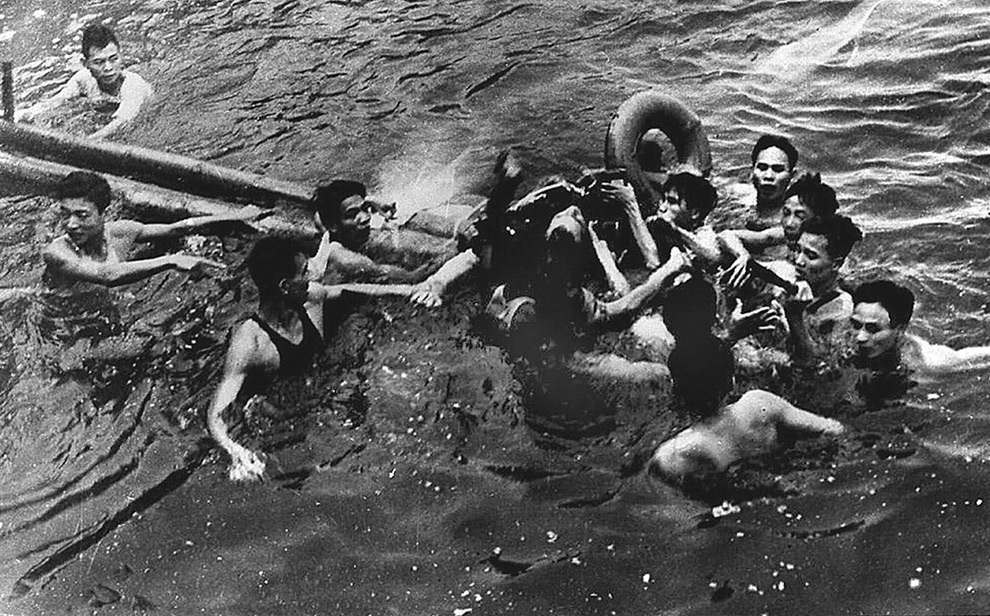How tough was John McCain?
Navy fighter pilot John McCain was captured by Vietnamese civilians in Truc Bach Lake near Hanoi Vietnam on Oct. 26, 1967. McCain’s A-4E Skyhawk had been shot down. McCain’s plane landed in the lake with both of his arms and one leg broken. When he got to shore, a crowd attacked him, and he was further injured with a rifle butt and bayonet. (Photo/Library of Congress)
ANNAPOLIS, MD – John McCain will be buried here soon, at the United States Naval Academy Cemetery, where the spirits of old classmates can gather forever for ghostly midnight bull sessions about the old days when all of them were beginning to come of age.
McCain, who died over the weekend, at 81, from brain cancer, was part of a legendary class at the U.S. Naval Academy. Oliver North was here then, and Jim Webb. So were John Poindexter and Bud McFarlane.
All were part of America’s warrior class. If their names don’t ring a bell, then you should brush up on your history of Vietnam and the Iran-Contra scandal, and Ronald Reagan, as well.
McCain was serving his country through all of this, beginning with his years here. There’s a wonderful book, called “The Nightingale’s Song,” written by the late Robert Timberg, which tells much of the story.
Timberg was a Naval Academy grad, too, a few years behind McCain. Timberg served in Vietnam, where he had his face blown away by a land mine 13 days before he was scheduled to go home. He went through dozens of surgeries. Private medical documents described Timberg’s wounded face as “highly repugnant.” For the rest of his life, he watched children stare in horror when they’d see him on the street.
Timberg understood, as few could, the horrors endured by John McCain.
In “The Nightingale’s Song,” Timberg documents the Naval Academy years of McCain and his classmates and follows them into Vietnam, where McCain miraculously survived 5 ½ years in captivity.
How tough was he?
Timberg describes McCain’s plane sinking to the bottom of a lake in Hanoi, and McCain trying “to manipulate the toggles of his life vest to inflate it, but discovered that his (broken) arms were useless,” so “he managed to pull the toggle with his teeth.
“An angry crowd had gathered, all seemingly armed. Stripped down to his skivvies, he was kicked and spat upon, then bayoneted in the left ankle and left groin…His right calf was nearly perpendicular to his knee. An onlooker slammed a rifle butt down on his shoulder, smashing it.”
How tough was he?
In the midst of relentless torture, his Vietnamese captors demanded the names of other squadron members. McCain gave them five names, all right – of the starting offensive line of the Green Bay Packers.
Donald Trump, famously deferred from the war because of bone spurs, said he didn’t consider McCain a hero. That’s because Trump doesn’t understand the meaning of the word.
There were 27 million men who came of draft age during the war years. About 16 million escaped military service through deferments, exemptions, legal technicalities, physical or emotional problems real or faked, and all of it done, as Timberg described it, with “background, wit or money.”
As the son and grandson of admirals, whatever questions McCain had about the war, he kept to himself. At his death, we think of him as a U.S. senator in his years of wisdom and perspective.
We have to remember this: he and his classmates were kids when they were here preparing for war. They went through the academy when America was learning to be cynical, when millions were choosing up sides from a safe place.
Those like McCain didn’t have that luxury. They were True Believers – not just in a controversial war, but in the notion of service to country. Hugging a flag the way this president does in front of cheering crowds – that grotesque show of faux patriotism’s a lot easier than McCain spending years in pain, in a space infested with mosquitoes and roaches, and rats scuttling across the floor.
Those years at the Naval Academy, those years in Vietnam – all were McCain’s years for discovering who he was, and what he stood for – and then translating those attributes into one of the legendary American political careers.

Michael Olesker, columnist for the News American, Baltimore Sun, and Baltimore Examiner has spent a quarter of a century writing about the city he loves.He is the author of several books, including Michael Olesker’s Baltimore: If You Live Here, You’re Home, Journeys to the Heart of Baltimore, and The Colts’ Baltimore: A City and Its Love Affair in the 1950s, all published by Johns Hopkins Press.

